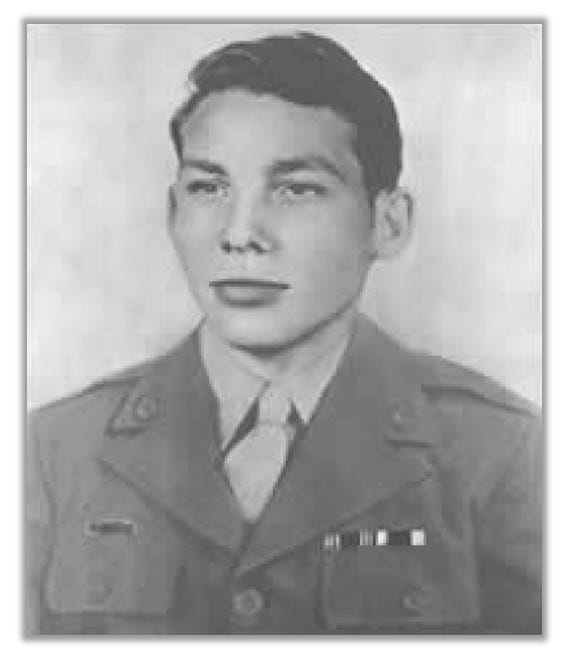TDIH: Tony Burris's bravery in Korea
“Sgt. Burris rose to his feet,” one soldier marveled, “and, crying 'Banzai,’ charged the emplacements.”
On this day in 1951, a hero engages in an action that would earn him the Medal of Honor. Tony Burris had volunteered to serve in the U.S. Army when he was just 21 years old. Less than a year later, he was already in Korea.
His first stint in the country didn’t last long.
“I suppose you will have heard before you receive this,” he wrote his parents after a few weeks in country, “that I have been wounded in action . . . Do not worry about me as I am all right. . . .”
He’d been writing them from a hospital in Japan, but he was soon back on the front lines. Those months were surely tough, but a September 1951 update to his family reveals that his battalion had taken a difficult hill. The feat earned them a nickname: “Fighting Vagabonds of the Second Division.”
“I would as soon do without some of that glory though,” he concluded, “ and let someone else revel in it.”
Just one day after he wrote those words, the long and grueling Battle of Heartbreak Ridge began.
“The opposing armies faced each other across a line,” one veterans’ website describes, “which ran with many twists and turns along the way from east to west, through the middle of the Korean peninsula, a few miles north of the 38th parallel. UN and communist forces jockeyed for position along this line, clashing in several relatively small but intense and bloody battles.”
Sfc. Tony Burris was right in the thick of it, but his Medal action didn’t begin until October 8.
On that day, one eyewitness later described, our soldiers became “pinned down by an intense hail of small arms, automatic weapons and grenade fire from a mammoth enemy bunker.” Burris yelled to a rifle team to provide him cover, then he ran straight for that massive bunker.
When he was within throwing range, he threw several grenades, killing the approximately 15 enemy inside. His action helped secure the hill for the night, but the battle was far from over. The attacks resumed the next morning as our soldiers sought to take the next ridge, a little to the north.
Burris was wounded early on that day, but he was undeterred. He kept working his way toward that ridge.
“Upon reaching the crest of the ridge,” eyewitness Sfc. Steve Sanchez later explained, “Burris again was wounded . . . . He ordered the company to remain under cover and to send forward a 57 mm recoilless rifle team. When the 57 mm team got to him, he placed them in a concealed position. He deliberately exposed himself so as to draw fire and cause the enemy to disclose their position.”
It was a risky maneuver, but it worked. The enemy had revealed their position, which was promptly destroyed by the Americans.
By this time, Burris had been wounded multiple times, and he was losing a lot of blood. There were still enemy positions to clear, though, and he refused to be evacuated.
“Sgt. Burris rose to his feet,” one of his fellow soldiers marveled, “and, crying 'Banzai,’ charged the emplacements. He destroyed the first machine gun and while throwing the grenade that destroyed another was killed by a burst of machine gun fire.”
His bravery inspired others. They renewed their assault with extra vigor, finally taking the hill.
Less than a year later, the Medal of Honor was awarded to Burris, making him the only Choctaw to receive the honor.
“Sergeant First Class Tony K. Burris was more than a brave American soldier,” the National Medal of Honor Museum concludes. “His story is one of unwavering commitment to American freedom—and selfless bravery in a bitter battle.”
Rest in peace, Sir.
Sources can always be found on my website, here.





His example encouraged others to take that hill. Heartbreak Ridge was a location for many to die or forever remember those who did. RIP Sir! Thanks for your spirit to win and take care of those you led.
The part of me which is Choctaw is especially proud of this!